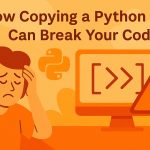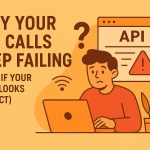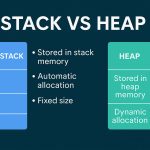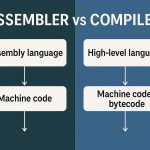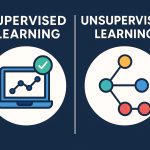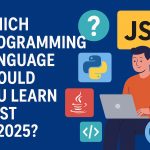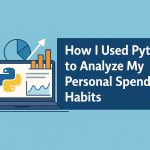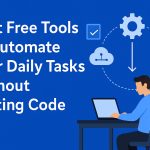Description
Unsupervised Learning is a type of machine learning where algorithms are used to discover patterns, structures, or relationships in data without labeled outputs. Unlike supervised learning—which relies on input-output pairs—unsupervised learning works with input data only, and attempts to infer the underlying structure or distribution within that data.
The core objective of unsupervised learning is to let the system explore the data and learn from it without human guidance. This makes it particularly useful in scenarios where:
- Labeled data is expensive or hard to obtain
- You want to uncover hidden patterns or groupings
- Anomalies or outliers need to be detected
Importance in Computer Science
Unsupervised learning is vital in fields such as:
- Data mining
- Pattern recognition
- Anomaly detection
- Recommendation systems
- Dimensionality reduction
- Natural language processing
In real-world applications, most data is unlabeled. Unsupervised learning techniques help uncover insights from such data and often serve as a foundation for further supervised or reinforcement learning tasks.
How It Works
Unsupervised learning techniques aim to model the underlying structure or distribution in the data to learn more about it.
Two main categories dominate:
- Clustering
- Grouping similar data points into clusters
- No prior knowledge of labels
- Dimensionality Reduction
- Compressing data into fewer features while retaining meaning
- Often used for visualization or preprocessing
Common Algorithms
| Algorithm | Description |
|---|---|
| K-Means | Clustering technique based on distance to centroids |
| Hierarchical Clustering | Builds nested clusters using a tree (dendrogram) |
| DBSCAN | Density-based clustering; detects arbitrary-shaped clusters and noise |
| Principal Component Analysis (PCA) | Projects data into lower dimensions maximizing variance |
| Autoencoders | Neural networks trained to reconstruct input data |
| t-SNE / UMAP | Non-linear techniques for visualizing high-dimensional data |
Key Concepts and Components
| Concept | Explanation |
|---|---|
| Latent Variables | Hidden variables inferred by the algorithm |
| Similarity Measure | Distance metrics (e.g., Euclidean, cosine) to compare points |
| Centroid | The center of a cluster |
| Loss Function | Measures how well the model fits the data |
| Dimensionality | Number of input variables (features) |
| Data Distribution | The shape and spread of data points |
📌 Example: K-Means Clustering
from sklearn.cluster import KMeans
from sklearn.datasets import make_blobs
import matplotlib.pyplot as plt
X, _ = make_blobs(n_samples=300, centers=4, random_state=42)
model = KMeans(n_clusters=4)
model.fit(X)
labels = model.predict(X)
plt.scatter(X[:, 0], X[:, 1], c=labels)
plt.show()This simple example demonstrates how K-Means separates data into 4 clusters based on proximity.
Real-World Applications
| Domain | Use Case |
|---|---|
| E-Commerce | Customer segmentation for targeted marketing |
| Cybersecurity | Anomaly detection in network traffic |
| Finance | Fraud detection, risk segmentation |
| Healthcare | Grouping similar patients by symptoms or genetic patterns |
| Image Processing | Image compression via PCA, object grouping |
| Text Mining | Topic modeling (e.g., LDA) on large text corpora |
Challenges and Limitations
| Challenge | Explanation |
|---|---|
| Lack of Ground Truth | No clear way to evaluate model performance |
| Interpretability | Understanding why the algorithm grouped certain data together is non-trivial |
| Scalability | Some methods (e.g., hierarchical clustering) scale poorly with large datasets |
| Parameter Sensitivity | Many algorithms require manual tuning (e.g., number of clusters) |
| Noise Sensitivity | Outliers can distort clustering or projections |
Comparison with Other Learning Types
| Type | Description |
|---|---|
| Supervised Learning | Uses labeled data; focuses on prediction |
| Unsupervised Learning | No labels; focuses on pattern discovery |
| Semi-Supervised Learning | Mix of labeled and unlabeled data |
| Reinforcement Learning | Learns via rewards in an interactive environment |
Best Practices
- Normalize or standardize features before clustering
- Use elbow method or silhouette score to find optimal number of clusters
- Combine PCA with clustering for better performance
- Visualize results using t-SNE/UMAP
- Cross-validate clusters with domain knowledge
Future Trends
- Deep Clustering
- Use of deep neural networks in unsupervised frameworks
- Contrastive Learning
- Self-supervised methods where the model learns representations by comparing samples
- Unsupervised NLP
- Large language models trained on unlabeled data (e.g., GPT, BERT)
- Hybrid Systems
- Merging supervised and unsupervised components for more robust results
Conclusion
Unsupervised learning opens the door to discovering hidden insights in raw data. While it lacks the direct feedback loop of supervised learning, its power lies in revealing structure where none is labeled. It remains a cornerstone in fields such as exploratory data analysis, computer vision, and modern AI research.
As data continues to explode in scale and complexity, mastering unsupervised techniques will be essential for intelligent data interpretation and decision-making.
Related Terms
- Clustering
- Dimensionality Reduction
- Anomaly Detection
- Feature Engineering
- Latent Variables
- PCA
- Autoencoder
- t-SNE
- UMAP
- K-Means
- DBSCAN
- Self-Supervised Learning
- Contrastive Learning
- Topic Modeling
- Generative Models

